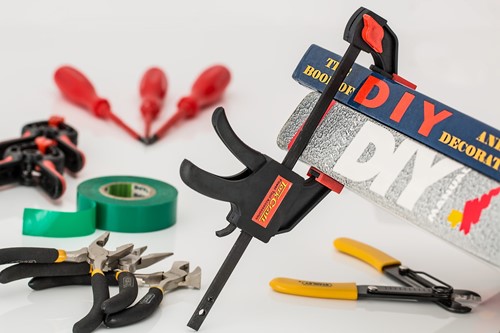Is Spray Foam or Fiberglass Insulation More Cost-Effective for DIY Homeowners?

While upgrading a building’s insulation may not feel as exciting as an expansive new kitchen, the potential energy savings add up. Here are a few things about fiberglass and spray foam insulation property owners may want to consider.
What Homeowners Need To Know About Fiberglass Insulation
The upfront investment of fiberglass insulation proves attractive to DIY homeowners because it remains quite low by comparison. In addition, this type of insulation can be purchased at local home materials outlets and easily transported. The rolled “batts” typically present yellow or pinkish fiberglass on one side and a paper layer on the other.
Installation requires DIYers to unfurl them directly into the spaces between the joists above your ceiling. The process makes installing new fiberglass insulation incredibly easy for a DIY homeowner. In terms of being cost-effective, a reasonably fit and agile homeowner may not require the help of a construction professional.
What Homeowners Need To Know About Spray Foam Insulation
The upfront cost of spray foam insulation generally exceeds that of fiberglass batts. This product typically involves equipment to disburse it into attics and behind walls. Other key differences involve where spray foam insulation installations are placed.
Rather than spray the materials between ceiling joists, it makes more sense to install it between roof rafters (support timbers directly holding up the roof). That key difference has significant implications to reduce air penetrations. Unlike fiberglass batts that lay over the ceiling and trap cold air in the attic, spray foam creates a determined barrier against drafts. As a result, the conventional wisdom is that properly installed spray foam can better nearly eliminate air penetrations from entering the building.
How To Decide Between Spray Foam and Fiberglass Insulation
Making an informed decision between spray foam products and fiberglass batts requires DIY homeowners to draw a few simple distinctions. These include upfront costs, reduced air penetrations and the installation process.
Handy DIY homeowners tend to have little difficulty rolling out fiberglass batts. Spray foam, on the other hand, may require enlisting a professional installer and incurring the cost associated with a construction professional. Last, it’s essential to weigh the upfront expenses against how much money each product will save you.
About the Author

Daniel Martin
Membership:
National Association of REALTORS (NAR)
Connecticut Association of REALTORS (CAR)
Bridgeport Board of Realtors
Valley Board of Realtors
Greater Fairfield County CMLS
Connecticut CTMLS
Education:
Principals and Procedures of Real Estate
Naugatuck Valley Community College
Connecticut School of Electronics
Housatonic Community College
Achievements:
Connecticut Magazine 5 Star Realtor 2014-2023
Top Producer
Top Listing Agent
Top Selling Agent
Professional Specialty:
My experience and expertise in the home selling and buying process gives my clients an advantage in any real estate market.
*First Time Home Buyers
*Single Family Homes
*Multi-Family Homes
*Land
*New Construction
*New Residential Developments
*Condominiums
*Downsizing
*Rentals
Personal:
Lifelong Connecticut Resident
Married with 2 Children, 3 Grandchildren
Musician
Golf Enthusiast
Areas Covered:
I specialize in Fairfield and New Haven Counties. *Shelton *Trumbull *Stratford *Bridgeport *Fairfield *Milford *Danbury Beacon Falls *Brookfield *Naugatuck Valley It doesn't stop there - I can also refer to anywhere in the world! Niche Marketing My background in customer service and technology gives me a step ahead of the competition. I use every available Marketing Resource to make your home stand out.
